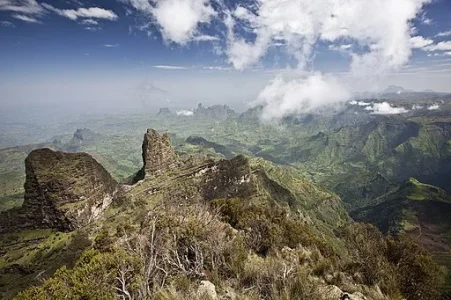
Image credit: Nina R from Africa
A recent research discovery suggests that ancient humans lived in the Ethiopian highlands about 2 million years ago. A New Scientist report states that a child's jawbone found in the region is one of the earliest fossils of Homo erectus. This finding is significant because these ancient hominins were among the first to settle in high-altitude areas.
According to Margherita Mussi of the Italo-Spanish Archaeological Mission at Melka Kunture and Balchit, based in Rome, the highlands are "a third pole for human evolution in Africa". While hominins have been found in large numbers in eastern and southern Africa, this is the first evidence of their presence in upland regions.
The jawbone was discovered in 1981 at the Garba IV site in the Ethiopian highlands and is affectionately called "Little Garba" by Mussi. Advanced synchrotron imaging techniques were used to study the teeth of the jawbone, leading to its identification as an early Homo erectus.
This discovery has important implications for our understanding of human evolution. It challenges previous assumptions about where and how our ancestors lived and adapted. With their unique climate and resources, the Ethiopian highlands may have played a crucial role in early humans' evolution and migration patterns.
This revelation highlights the African continent's rich history and diversity and its central role in human evolution. It reminds us of the interconnectedness of all people and the significance of our shared history.




